
Buera



| Los Corrales | Buera village |

Before that time the miller had to work with a huge prensa de viga y quintal, a cantilever press. It was a slow process requiring several hard working people and with the risk of a fracture of the beams always present. The original press did not survive, but a life size replica has been built and is on display. This type was also used in e.g. Aguinalíu, Castarlenas.

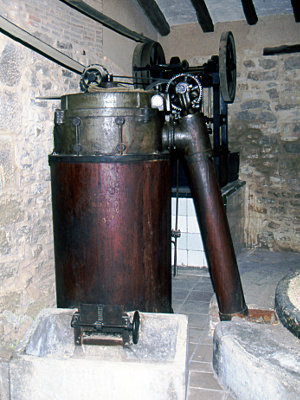
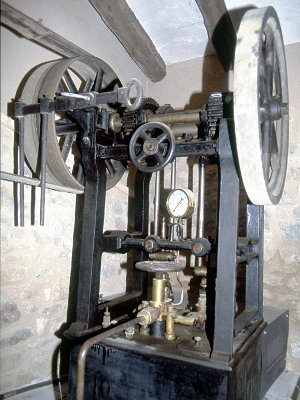
A batidora (3) is a device which stirs the mash of olives and heats it up to the right temperature for further processing. It means a considerable reduction of work for the miller.
capachos, or
esteras, which are double layered discs originally woven from the grass Stipa tenacissima but are nowadays made from synthetic fibers.
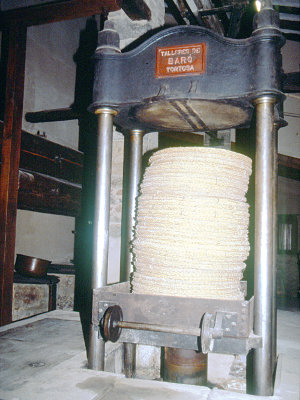
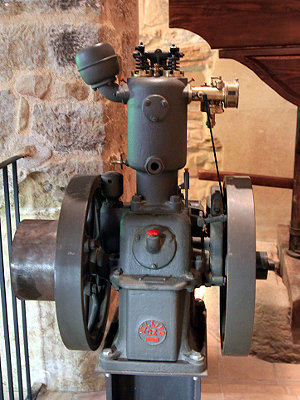
vagoneta(notice the wheels) which was then pushed into the press (5). The head of the press carries a tag in a company founded in 1886 by . The Baró company invented several tricks to improve the yield of its tools. Other Baró installations can be seen in Angüés, Castillazuelo, and in Benabarre, inter alia.
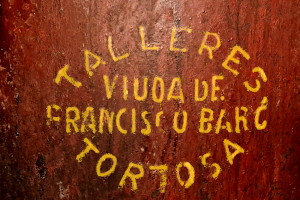

The brand name of the mixer (3) is faintly visible in traces of yellow paint on its side.
Its label (7) says:
.
is a company which came only in business at the end of the 1940s. Therefore, the batidora on show cannot have been part of the original modernization in 1927.
| Los Corrales | Buera village |